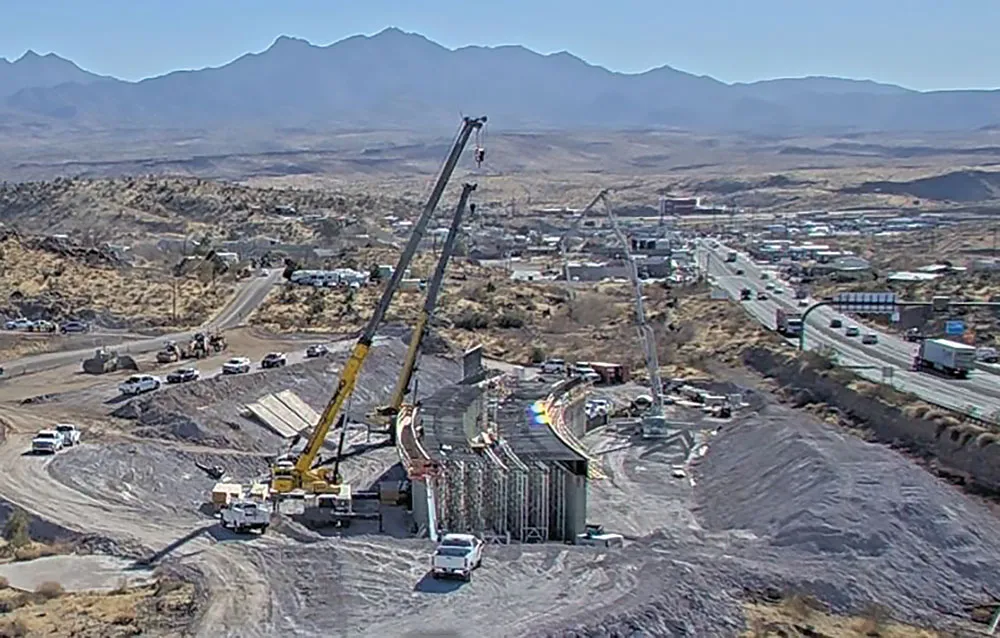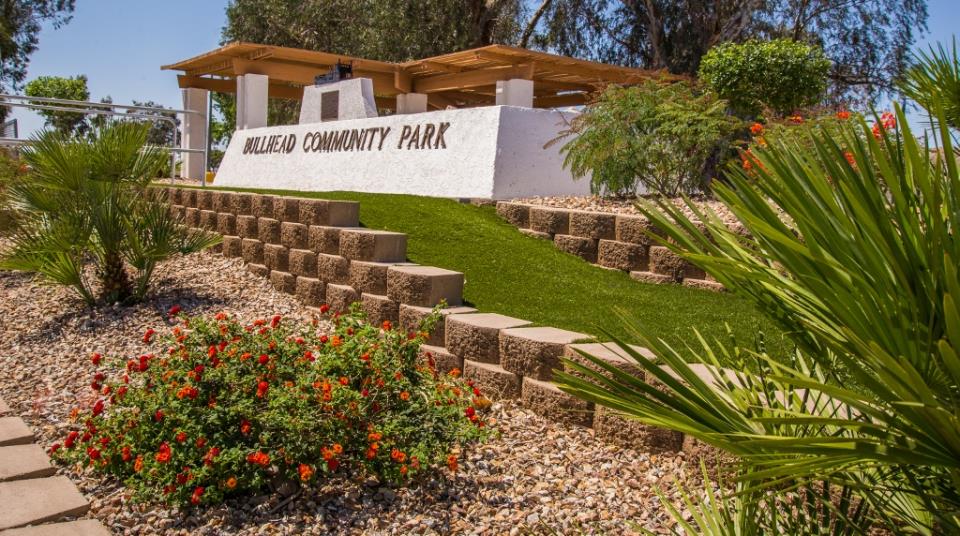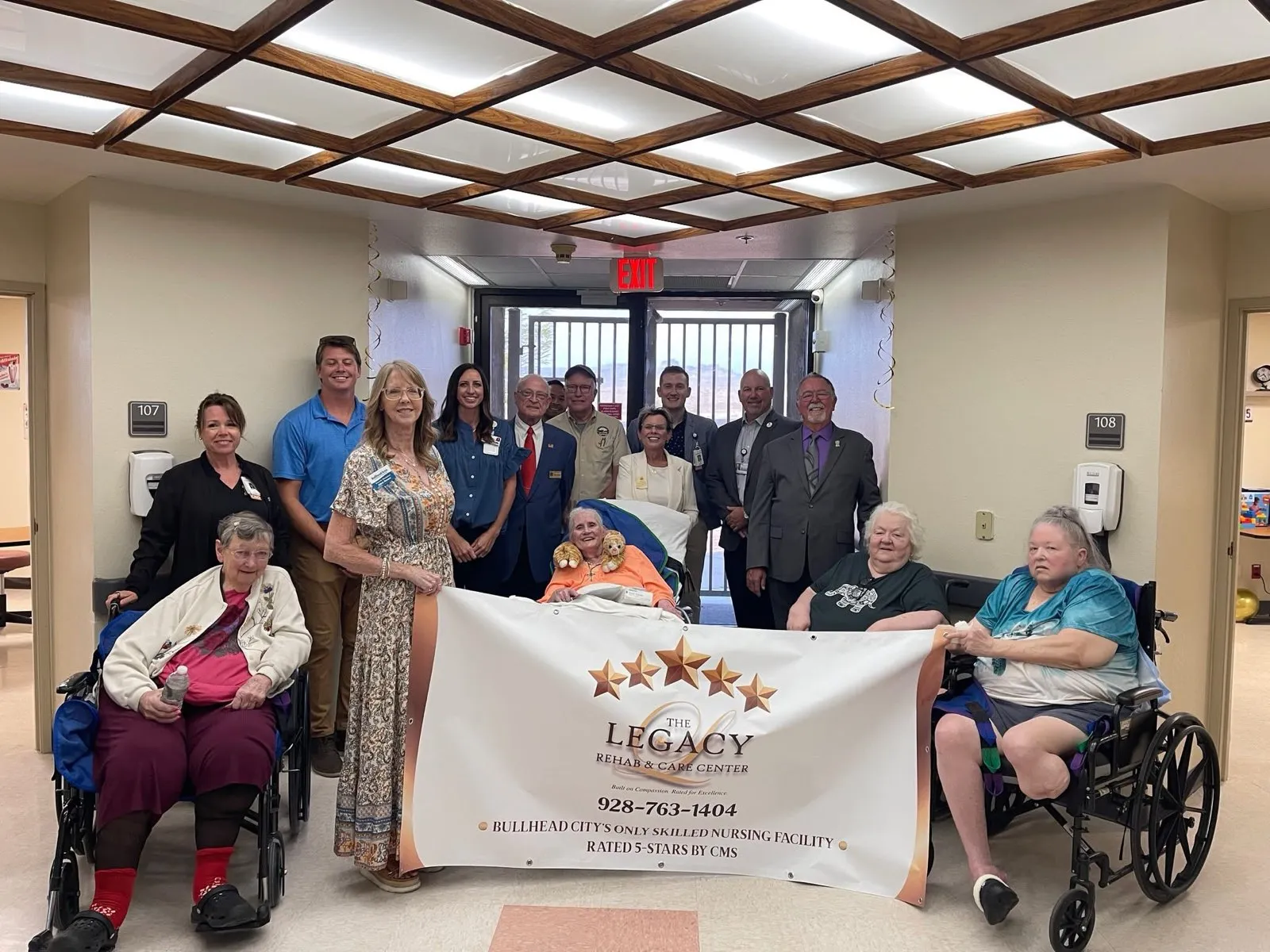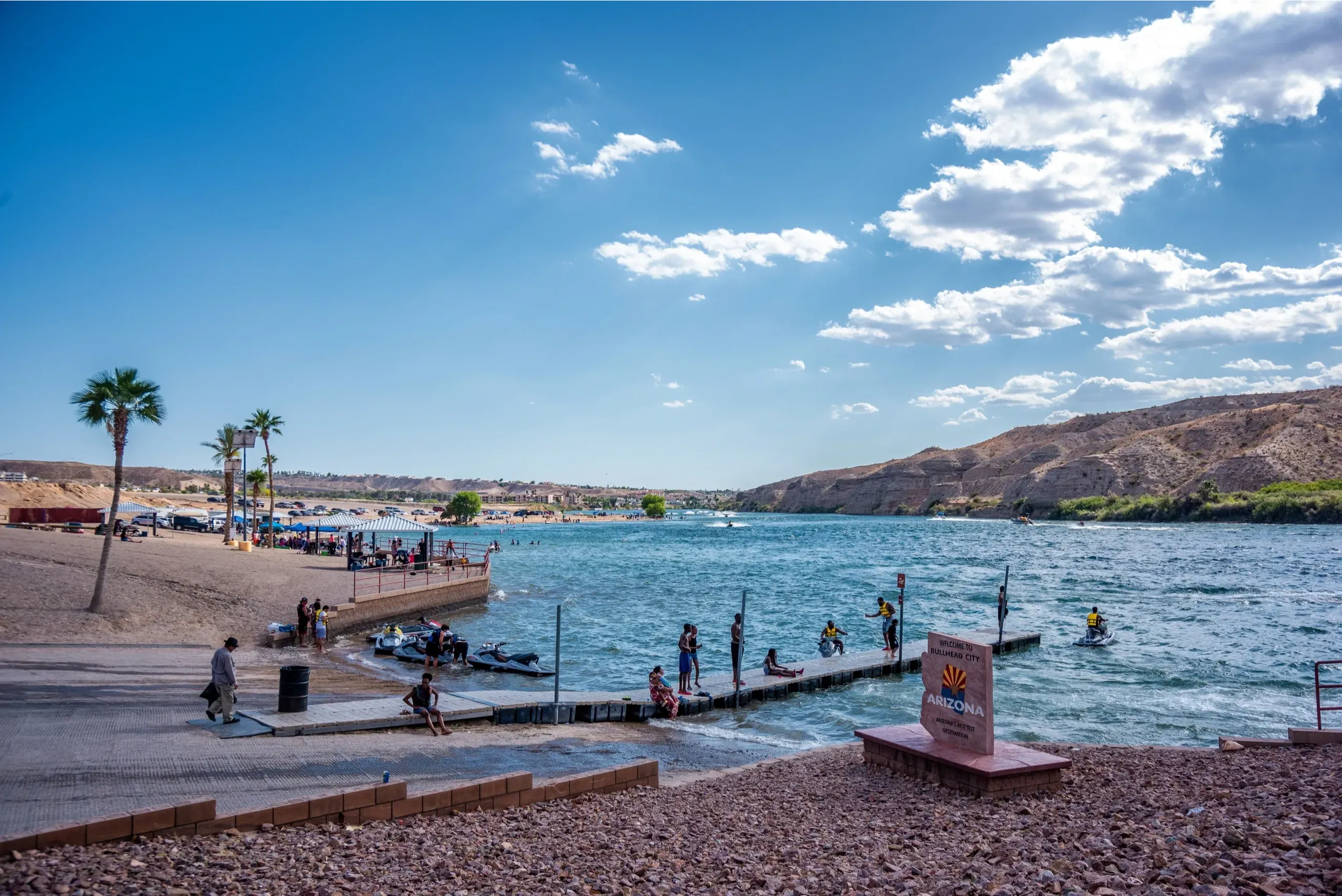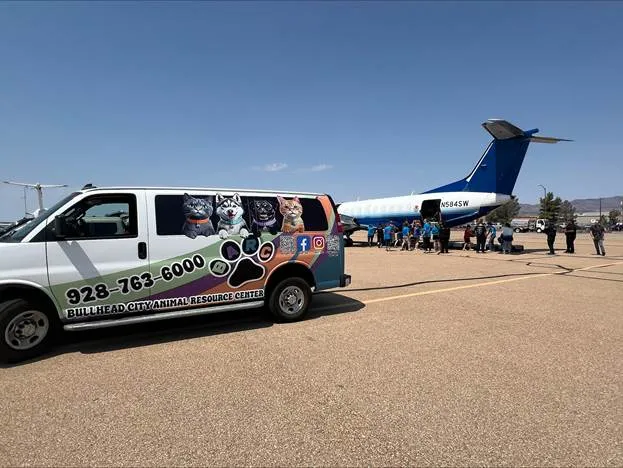KINGMAN — Drivers traveling the critical corridor between Phoenix and Las Vegas can expect significant progress in 2025 on a major interchange connecting Interstate 40 and US 93. The Arizona Department of Transportation (ADOT) is set to reach the halfway point of its long-awaited $106 million Kingman interchange project by late next year, marking an important milestone in efforts to reduce congestion and enhance safety across northwestern Arizona’s highways.
Project Overview and Timeline
This system-to-system interchange, which broke ground in mid-2024, has been carefully designed to eliminate the traffic backups and delays frequently observed on US 93, the main arterial route linking Las Vegas to communities across Arizona. Once completed in 2027, the new traffic configuration will allow vehicles to flow onto and off Interstate 40 without encountering the current signalized intersection at Beale Street, thereby improving travel times for both commercial and leisure traffic.
Addressing Congestion and Safety
The Kingman interchange construction addresses longstanding concerns about growing volumes of freight and passenger vehicles at the crossroads of two significant highways. US 93 is part of the CANAMEX Corridor (linking Canada to Mexico through the southwestern United States), while Interstate 40 is a vital east-west route spanning the country. By removing stoplights and introducing free-flow ramps, this project aims to reduce collisions, speed up commutes, and support economic development in Mohave County.
Benefits for Travelers and Businesses
For travelers heading north to Las Vegas or south to Phoenix, the Kingman area had become a frequent chokepoint, especially during holiday weekends and peak tourist seasons. With the halfway point slated for late 2025, local businesses, trucking companies, and residents can begin to see the light at the end of the tunnel. According to ADOT project managers, major progress will include substantial work on the future ramps, completing bridge structures, and shifting traffic patterns to accommodate construction zones more efficiently.
Part of a Broader Infrastructure Strategy
This interchange forms only one component of ADOT’s extensive strategy for modernizing US 93 between Wickenburg and the Nevada state line. Since 1999, the agency has completed 20 projects to widen sections of this highway, which is currently a mix of two-lane segments and divided four-lane stretches. By investing in projects like the Kingman interchange, Arizona officials hope to facilitate safer, faster travel and bolster economic connectivity between key population centers.
Upcoming Projects on US 93
In 2025, ADOT will kick off yet another project that widens a four-mile section of US 93 at Cane Springs, located north of Wikieup between mileposts 106 and 110. This $80.6 million undertaking is anticipated to wrap up in 2026 and dovetails with Arizona’s broader vision of converting the full 200-mile stretch of US 93 into a four-lane divided highway. Plans call for additional four-lane expansions in the coming years: two expansions in the Vista Royale area northwest of Wickenburg (scheduled for fiscal year 2026), another segment near Big Jim Wash slated for 2027, and a passing-lane enhancement project slated to start in 2026.
Focus on Safety and Traffic Flow
The goal is clear: reduce the accident rate on a highway that has seen its fair share of crashes while accommodating ever-increasing travel demands. US 93 is not only a tourist route to Las Vegas and the Hoover Dam but also a crucial commercial thoroughfare that serves the southwestern region’s growing population and trade routes.
Rancho Santa Fe Parkway Interchange
Beyond the improvements at I-40/US 93, Kingman will also see continued construction of a $44 million interchange at Rancho Santa Fe Parkway. This project, slated for completion in 2026, promises to alleviate some of the congestion currently burdening Andy Devine Avenue, which is the main I-40 exit for accessing the Kingman Airport and nearby industrial park. By offering direct access to the airport and airpark, Rancho Santa Fe Parkway’s new ramps are expected to encourage commercial growth and accommodate anticipated population increases on Kingman’s eastern side.
Economic Development and Growth
The Rancho Santa Fe Parkway interchange demonstrates ADOT’s commitment to investing in local infrastructure that fosters economic development. As Kingman positions itself as a distribution and logistics hub—benefiting from relatively easy access to California, Nevada, and Arizona’s major metro areas—these infrastructure upgrades are vital for attracting new businesses and supporting local industries.
ADOT’s Regional Improvement Plans
To keep the public informed of ongoing work, ADOT has rolled out a Northwest Regional Improvements webpage detailing more than 20 current and upcoming construction projects on US 93 and I-40 across Mohave County. These initiatives include 84 miles of new pavement on US 93 and 48 miles of new pavement on I-40, plus a series of bridge replacements, lane additions, and resurfacing ventures aimed at extending pavement life and improving travel conditions.
Paving Projects on I-40 and US 93
Among the scheduled pavement projects on I-40 are resurfacing efforts stretching from the Arizona-California state line near the Colorado River to the State Route 95 junction (mileposts 0–8), as well as multiple sections around Holy Moses Wash and Walnut Creek (mileposts 33–46 and 47–58). In total, 32 miles of fresh pavement are planned on I-40 in northwestern Arizona alone. Similarly, US 93 is set to receive 36 miles of paving improvements, including a 23-mile repaving project near Chloride (mileposts 48–71) beginning in 2025 and extending into 2026, and a 13-mile segment near Wikieup (mileposts 131–144) slated to start and finish within 2025.
Other Major Road Projects in Arizona
While Kingman and its vital corridors represent a key priority for ADOT, they are far from the only focus. State Route 87 through Payson, for instance, is set to undergo a $19.8 million resurfacing project covering nearly four miles from Green Valley Parkway to Houston Mesa Road. Slated to begin by summer 2025, the two-year effort includes stormwater drainage improvements, new signage, and traffic light upgrades. It is designed to improve safety and reduce wear and tear on a road heavily trafficked by travelers heading into Arizona’s high-country recreational areas.
Phoenix Area Improvements
For motorists closer to the Phoenix metro area, two substantial projects will continue to shape journeys to and from northern Arizona in 2025. First is the Interstate 17 Improvement Project, widening a 15-mile section between north Phoenix and Black Canyon City and adding about eight miles of flex lanes to ease congestion, especially during peak travel times and weekends. Second is the ongoing US 60 Bridge Replacement initiative east of Superior in Pinal County, which aims to update the aging Queen Creek and Waterfall Canyon bridges (mileposts 227–229.5). Both projects will deliver safer, smoother drives for residents and visitors traveling from Phoenix to the state’s northern reaches.
Long-Term Vision for Arizona’s Highways
Collectively, these infrastructure improvements signal a coordinated approach to modernizing Arizona’s highways. By easing traffic chokepoints, ADOT expects to reduce travel times for commuters, boost freight efficiency for trucking firms, and cut down on accidents. In addition, major improvements around Kingman are poised to generate local economic benefits by making the region more appealing for industrial investments and tourism. Businesses operating near the Kingman Airport and the city’s industrial park could see lower transportation costs and faster turnaround times, potentially spurring job growth and new business opportunities.
Tourism and Economic Growth
Tourism, a vital economic engine for Arizona, also stands to benefit from these upgrades. With the Grand Canyon to the northeast and the Las Vegas entertainment hub just across the state line, improvements along US 93 and I-40 create a smoother journey for millions of annual visitors. Officials hope that decreasing road congestion and improving travel reliability will enhance the overall visitor experience, encouraging repeat tourism and supporting local economies dependent on traveler spending.
Looking Forward: ADOT’s Ongoing Projects
As 2025 unfolds, milestones such as the halfway point of the Kingman interchange project will serve as tangible markers of progress. Although full completion of some projects remains several years away, ADOT’s overarching plan continues forging ahead, supported by funding allocations detailed in the state’s Five-Year Transportation Facilities Construction Program for 2025–2029.
With significant work scheduled or underway on I-40, US 93, State Route 87, Interstate 17, and US 60, drivers across northern Arizona can expect noticeable improvements to safety, capacity, and travel times. These roads are crucial connectors for communities spread across vast desert and mountain landscapes, so ensuring their reliability remains a top priority for state and local officials.
Conclusion: Short-Term Disruptions for Long-Term Gains
While construction zones inevitably bring delays and temporary inconveniences, state transportation leaders emphasize that the short-term disruptions will yield long-term dividends. By expanding lanes, upgrading aging bridges, and introducing modern interchange designs, ADOT is positioning Arizona’s highways for the future—one where commerce, tourism, and daily commutes can continue to flourish without the bottlenecks and hazards of outdated infrastructure.
For more information on ADOT’s statewide transportation improvement projects, including detailed timelines and maps, visit azdot.gov/projects.
—Jeremy Webb

